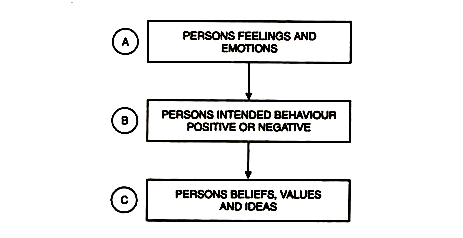Ethics in HRM, Principles, Challenges
Ethics in Human Resource Management (HRM) refers to the moral principles and values that guide the actions, decisions, and behavior of HR professionals and organizations in managing their workforce. Ethical practices in HRM are fundamental to creating a fair, inclusive, and respectful workplace, ensuring that employees are treated with dignity, integrity, and respect. Ethical behavior also strengthens the organization’s reputation, fosters trust, and contributes to long-term business success.
Importance of Ethics in HRM
The importance of ethics in HRM cannot be overstated. It helps in promoting fairness, transparency, and accountability in HR practices, leading to better employee relations, higher morale, and enhanced productivity. Ethical HRM practices also foster a positive organizational culture, which attracts and retains talent and reduces the risk of legal issues arising from discriminatory or unfair practices. Furthermore, organizations with a strong ethical framework build credibility with stakeholders, which is critical in the long term.
Core Ethical Principles in HRM
- Fairness and Equality
One of the most fundamental ethical principles in HRM is fairness. HR professionals must ensure that all employees are treated equitably and that decisions, particularly in hiring, promotions, and compensation, are based on objective criteria. Discriminatory practices based on gender, race, ethnicity, age, or other personal characteristics must be actively avoided. Equal opportunity policies must be in place, ensuring that all employees have the same chances to succeed.
- Confidentiality
HR professionals deal with sensitive and private employee information, ranging from personal details to performance appraisals. Protecting this confidentiality is an ethical responsibility. Employees should trust that their personal data is handled with care and only shared with relevant parties. Breaches of confidentiality can lead to a loss of trust, legal liabilities, and reputational damage.
- Transparency
Transparency in decision-making is a core value of ethical HRM. HR professionals must ensure that employees understand the processes involved in promotions, rewards, disciplinary actions, and terminations. Open communication about policies, criteria for performance evaluations, and organizational changes ensures employees feel valued and informed, reducing misunderstandings and mistrust.
-
Integrity and Honesty
HR managers must operate with integrity, ensuring that they act in the best interests of both the organization and its employees. Honesty in communication, feedback, and decision-making is essential for creating an environment of trust. HR professionals must not manipulate or misrepresent facts, whether in the recruitment process, performance reviews, or conflict resolution.
- Respect for Employee Rights
Respecting employees’ rights is central to HR ethics. This includes respecting their right to fair treatment, the right to join a union or association, the right to a safe work environment, and the right to privacy. HR should provide mechanisms for employees to voice grievances and complaints, ensuring they are addressed fairly and promptly.
- Social Responsibility
HR professionals also have a responsibility to ensure that the organization follows ethical guidelines beyond the workplace. This includes ensuring that the organization adheres to environmental, social, and governance (ESG) practices. Promoting diversity and inclusion, advocating for employee well-being, and contributing to community development are aspects of HR’s role in social responsibility.
Ethical Challenges in HRM:
- Discrimination and Bias
One of the most significant ethical challenges in HRM is the prevention of discrimination and bias. Whether in recruitment, promotions, or compensation, HR must ensure that decisions are made without bias based on race, gender, sexual orientation, disability, or other protected characteristics. Discriminatory practices can lead to legal consequences and damage an organization’s reputation.
- Workplace Harassment
Sexual harassment, bullying, and other forms of workplace harassment are critical ethical issues in HRM. It is the responsibility of HR professionals to create a safe working environment by establishing clear anti-harassment policies and providing training to all employees. HR must take swift action in investigating and resolving harassment complaints to prevent harm to individuals and maintain a positive organizational culture.
- Performance Appraisal and Employee Feedback
Providing honest, constructive feedback to employees can sometimes be a delicate issue. An ethical HR manager must balance being honest while maintaining respect for the employee’s dignity. Inaccurate performance appraisals or biased evaluations can lead to poor morale and resentment among employees. HR must ensure that feedback is fair, specific, and actionable.
- Privacy Issues
Employees have a right to privacy, and it is an ethical obligation for HR to protect their personal and professional information. However, the increasing use of digital tools, surveillance, and performance monitoring presents ethical dilemmas regarding the extent of monitoring. HR must find a balance between ensuring workplace productivity and respecting employees’ privacy.
- Employee Downsizing and Termination
Downsizing, layoffs, and termination are among the most difficult ethical challenges for HR professionals. HR must ensure that these decisions are made based on sound business reasons rather than arbitrary factors. Employees should be given fair notice, severance pay, and support for transitioning to new roles. Ethical considerations also include the dignity with which the employee is treated during the termination process.
Creating an Ethical HRM Culture:
- Developing Clear Policies
Clear and concise HR policies, including anti-discrimination, anti-harassment, and equal opportunity policies, are critical for establishing ethical guidelines within the organization. These policies should be regularly reviewed and communicated to all employees.
- Training and Awareness Programs
Ongoing training programs for HR professionals and employees on ethical issues, such as workplace harassment, diversity, and unconscious bias, can significantly improve the ethical culture of the organization.
-
Leadership and Accountability
Ethical behavior must start at the top. Senior management should lead by example, demonstrating the ethical values they want to see in the organization. Additionally, HR professionals must be accountable for their decisions and actions.

